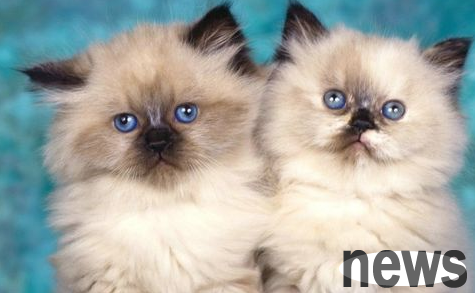The pathogenesis and symptoms of heart failure in cats, common diseases in cats! Heart failure in cats is also called cardiac insufficiency. It is not an independent disease and is often secondary to the occurrence of other diseases. It is a syndrom...
The pathogenesis and symptoms of heart failure in cats, common diseases in cats! Heart failure in cats is also called cardiac insufficiency. It is not an independent disease and is often secondary to the occurrence of other diseases. It is a syndrome of weakening myocardial contraction function, resulting in reduced cardiac blood output, insufficient tissue perfusion, obstruction of venous return, and edema, dyspnea, cyanosis, and even cardiac arrest and sudden death. According to the course of the disease, it can be divided into acute and chronic. Chronic heart failure is also called congestive heart failure.

1. Pathogenesis
The cardiovascular has strong compensation ability. Under normal circumstances, it is enough to complete the cardiac blood volume task that exceeds the normal load of the heart by 5-6 times. When animals lack exercise suddenly have severe or vigorous exercise, the blood volume and venous blood return volume of the tissues and organs of the body have increased dramatically. In order to discharge more blood and adapt to the needs of various tissues and organs, the heart must compensate by strengthening myocardial contraction force and accelerating myocardial contraction frequency. Relying on strengthening myocardial contraction force and accelerating myocardial contraction frequency, although it can improve blood circulation to a certain extent in a short period of time, both can also lead to excessive consumption of myocardial reserve energy and aggravate the dysfunction of the center of the heart. Especially the frequency accelerates, which not only increases the myocardial oxygen consumption, but also greatly shortens the ventricular diastolic period, reduces the ventricular inadequate filling and coronary blood flow, which not only does not increase but also reduces the blood volume of the heart, because of incompensation.
Acute heart failure is caused by weakening myocardial contraction force, which reduces cardiac blood volume, reduces arterial pressure, reflexively causes sympathetic nerve excitation, and compensatory tachycardia. When the heart rate exceeds a certain limit, the ventricle is insufficient, the coronary blood flow decreases, and the cardiac blood output decreases. Sympathetic nerve excitation causes the adrenal medulla to secrete a large amount of catecholamines (adrenalin, norepinephrine, etc.), causing spastic contraction of peripheral blood vessels, aggravate the ventricular pressure load, resulting in insufficient blood supply to the kidneys, reflexively causing the adrenal cortex to secrete aldosterone and the hypothalamic-neuropituitary gland to increase the reabsorption of water and sodium ions by the renal tubules, causing water and sodium retention, increasing blood volume, aggravate the volume load of the ventricle and venous congestion, causing heart failure to become more serious, and eventually dyscompensation and acute heart failure occurs.
Congestive heart failure is common in endocardial diseases (bacterial endocarditis, congenital endocardial fibrous elastopathy), myocardial diseases (, cat cardiomyopathy, infectious myocarditis), pericardial diseases (constriction pericarditis, pericardial tumors), congenital heart defects (atrial septum or ventricular septal defects, aortic or pulmonary valve stenosis, patent arterial catheter, etc.), infections (paroviral virus infection, trypanosomiasis, cat infectious peritonitis), shock, endotoxemia, etc.

2. Symptoms
Congestive heart failure occurs in a chronic manner. Sick cats are tired if they exercise or even excitement, which means they are tired, depressed, weight loss, and pale or cyanotic conjunctiva. Coughing and breathing difficulties occur when accompanied by pulmonary congestion or pulmonary edema. Some have ascites and subcutaneous edema. Cardiac examination shows tachycardia, muddy heart sound, the first heart sound is enhanced and the second heart sound is weak, often with loud heart murmurs and precordial tremors, arrhythmia, and a weak pulse. On the electrocardiogram, the QRS reflux time limit is extended or peak cleavage occurs due to ventricular enlargement, which is often accompanied by atrial or ventricular premature beats, paroxysmal tachycardia, atrial fibrillation and atrioventricular block. X-ray examination often shows changes in cardiac hypertrophy, pulmonary congestion or pleural effusion.
When left heart failure, in addition to the above signs, there are often severe dyspnea, cough, colorless or pink foamy liquid flowing out of the nostrils, and chest auscultation can cause symptoms of pulmonary congestion and pulmonary edema such as generalized wet rales.
When right heart failure, in addition to the above signs, there are often clinical signs such as conjunctival cyanosis, superficial venous anger, subcutaneous edema, hepatic enlargement, ascites and other clinical signs.